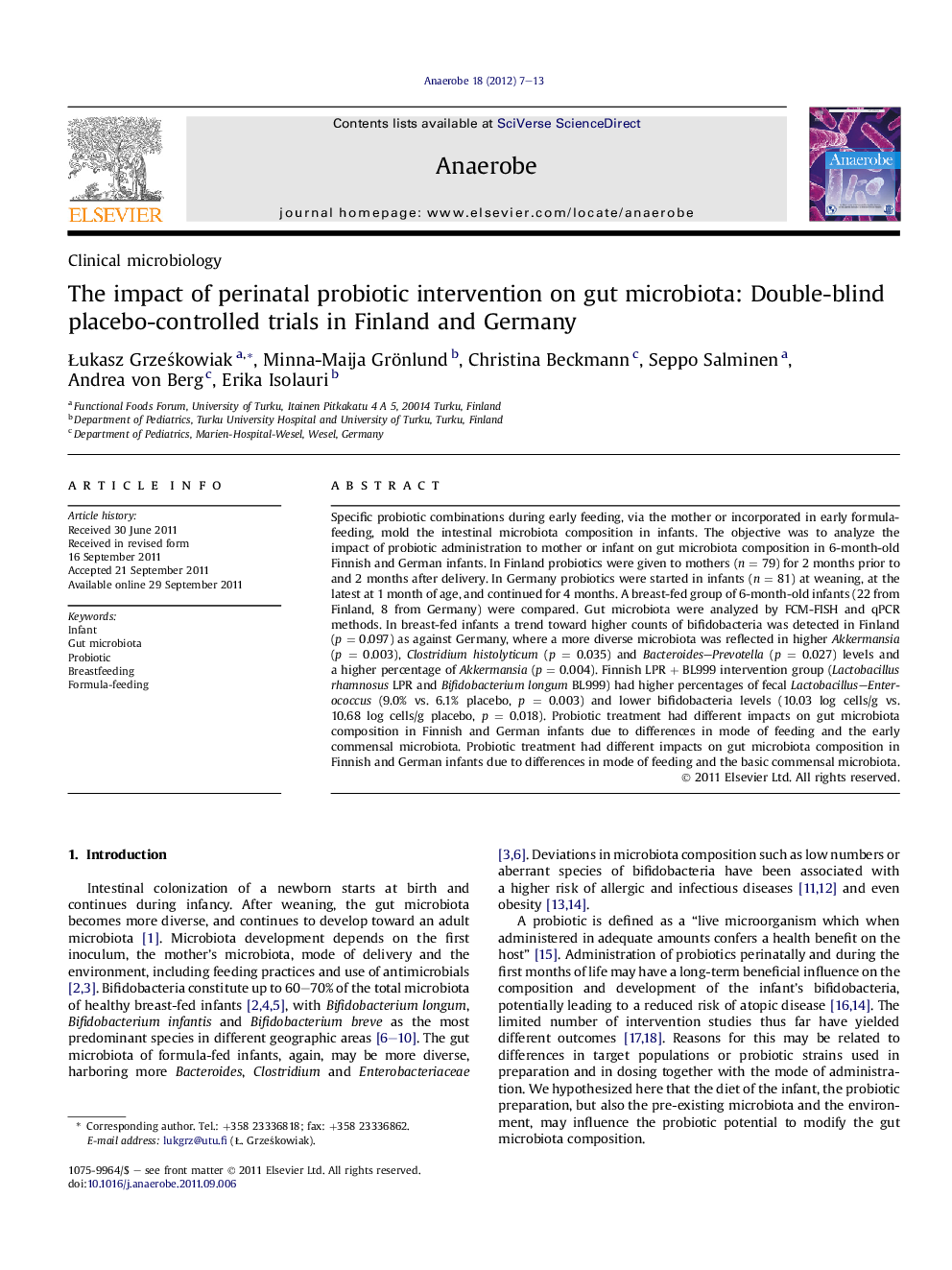| Article ID | Journal | Published Year | Pages | File Type |
|---|---|---|---|---|
| 3395366 | Anaerobe | 2012 | 7 Pages |
Specific probiotic combinations during early feeding, via the mother or incorporated in early formula-feeding, mold the intestinal microbiota composition in infants. The objective was to analyze the impact of probiotic administration to mother or infant on gut microbiota composition in 6-month-old Finnish and German infants. In Finland probiotics were given to mothers (n = 79) for 2 months prior to and 2 months after delivery. In Germany probiotics were started in infants (n = 81) at weaning, at the latest at 1 month of age, and continued for 4 months. A breast-fed group of 6-month-old infants (22 from Finland, 8 from Germany) were compared. Gut microbiota were analyzed by FCM-FISH and qPCR methods. In breast-fed infants a trend toward higher counts of bifidobacteria was detected in Finland (p = 0.097) as against Germany, where a more diverse microbiota was reflected in higher Akkermansia (p = 0.003), Clostridium histolyticum (p = 0.035) and Bacteroides–Prevotella (p = 0.027) levels and a higher percentage of Akkermansia (p = 0.004). Finnish LPR + BL999 intervention group (Lactobacillus rhamnosus LPR and Bifidobacterium longum BL999) had higher percentages of fecal Lactobacillus–Enterococcus (9.0% vs. 6.1% placebo, p = 0.003) and lower bifidobacteria levels (10.03 log cells/g vs. 10.68 log cells/g placebo, p = 0.018). Probiotic treatment had different impacts on gut microbiota composition in Finnish and German infants due to differences in mode of feeding and the early commensal microbiota. Probiotic treatment had different impacts on gut microbiota composition in Finnish and German infants due to differences in mode of feeding and the basic commensal microbiota.
